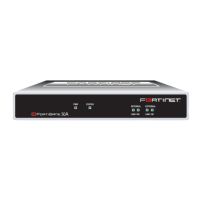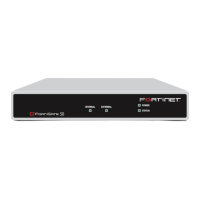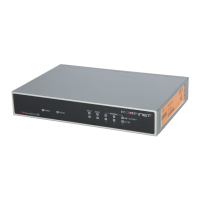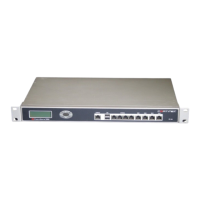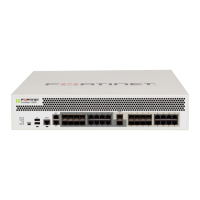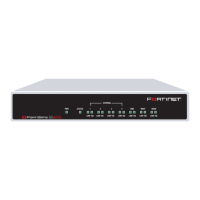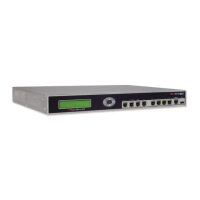FortiGate Version 3.0 MR4 Administration Guide
138 01-30004-0203-20070102
Replacement messages System Config
Changing replacement messages
Figure 73: Sample HTTP virus replacement message
Replacement messages can be text or HTML messages. You can add HTML code
to HTML messages. Allowed Formats shows you which format to use in the
replacement message. There is a limitation of 8192 characters for each
replacement message.
In addition, replacement messages can include replacement message tags. When
users receive the replacement message, the replacement message tag is
replaced with content relevant to the message. Table 28 lists the replacement
message tags that you can add.
Table 28: Replacement message tags
Tag Description
%%AUTH_LOGOUT%% The URL that will immediately delete the current policy and
close the session. Used on the auth-keepalive page.
%%AUTH_REDIR_URL%% The auth-keepalive page can prompt the user to open a new
window which links to this tag.
%%CATEGORY%% The name of the content category of the web site.
%%DEST_IP%% The IP address of the request destination from which a virus
was received. For email this is the IP address of the email
server that sent the email containing the virus. For HTTP this is
the IP address of web page that sent the virus.
%%EMAIL_FROM%% The email address of the sender of the message from which
the file was removed.
%%EMAIL_TO%% The email address of the intended receiver of the message
from which the file was removed.
%%FAILED_MESSAGE%% The failed to login message displayed on the auth-login-failed
page.
%%FILE%% The name of a file that has been removed from a content
stream. This could be a file that contained a virus or was
blocked by antivirus file blocking. %%FILE%% can be used in
virus and file block messages.
%%FORTIGUARD_WF%% The FortiGuard - Web Filtering logo.
%%FORTINET%% The Fortinet logo.
%%HTTP_ERR_CODE%% The HTTP error code. “404” for example.
%%HTTP_ERR_DESC%% The HTTP error description.
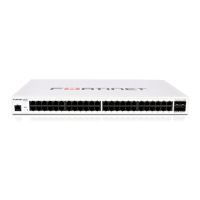
